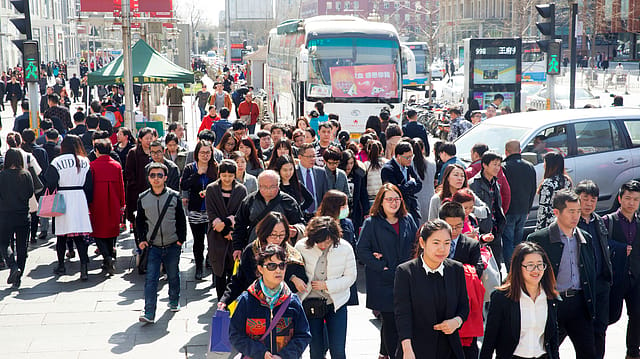China's ageing population, smaller workforce will affect most sectors: Moody's
ADVERTISEMENT

Demographic dividends that drove productivity and rapid growth in China over the past decades are dissipating as the population ages, according to Moody's Investors Service.
The declining labour contribution to growth will be a key drag on China's economic potential over the long term, particularly as benefits from urbanisation fade, the credit ratings agency says.
The aging population and smaller workforce will put pressure on regional and local governments and change consumption patterns, says Moody's.
While some sectors like housing will face challenges, there will be opportunities as well, such as in healthcare.
China's aging demographics present significant challenges to its economic growth potential, according to Moody's. Barring gains in productivity, the decline in labour supply and increased healthcare and social spending, could lead to a wider fiscal deficit and higher debt burden, it says. "A smaller workforce could also erode domestic savings, resulting in higher interest rates and declining investment and capital stock as a growth driver."
China's population has been aging at a rapid pace since 2010, with a decline of the newborn rate of about 30% over the next decade to 2022. The working-age population (defined by the United Nations as those 15 to 64 years old) has shrunk from the peak of 73% of the total population in 2010. The size of the working-age group is forecast by the UN to decline by nearly 40% by 2050 from 2010 if fertility rates remain at current levels. Meanwhile, the population over 65 will more than triple to over 400 million – about one-quarter of the total population – by 2050 from levels in 2010.
January 2026
Netflix, which has been in India for a decade, has successfully struck a balance between high-class premium content and pricing that attracts a range of customers. Find out how the U.S. streaming giant evolved in India, plus an exclusive interview with CEO Ted Sarandos. Also read about the Best Investments for 2026, and how rising growth and easing inflation will come in handy for finance minister Nirmala Sitharaman as she prepares Budget 2026.
"Under these circumstances, China's fiscal strength will deteriorate and compound the drag from aging on economic potential, a credit negative for the sovereign. While policy efforts are underway to mitigate these effects, the success of such initiatives remains uncertain," notes Moody's.
While China's challenges mirror the broader global demographic slowdown, its population aging differs from that of developed nations because the growth in pensioners has come before it has fully developed the means to look after them, says Moody's.
The aging population and slowdown in urbanisation growth will lead to a long-term decrease in China's residential housing purchase demand. The percentage of population with the highest housing demand (20-59 years old) has steadily declined over the past decade and this trend is unlikely to reverse.
The gradual decrease in the working-age population could lead to a smaller pool of available workers for labour-intensive industries, a structural change that industrial companies will have to adapt to, the ratings firm says.
Industrial companies heavily reliant on manual labour, such as construction, labour-intensive manufacturing, and certain service sectors like delivery, may find it increasingly difficult to find and retain skilled labour as the workforce declines. This, according to Moody’s, could drive up labour costs, as these industries may need to offer higher wages and better benefits to attract and retain workers. Increasing labour costs could reduce the competitiveness of Chinese manufacturers compared with peers in other emerging markets.
On the other hand, new consumption patterns as the population ages – such as rising demand for healthcare, wellness and leisure – will create opportunities for some companies, it adds.
